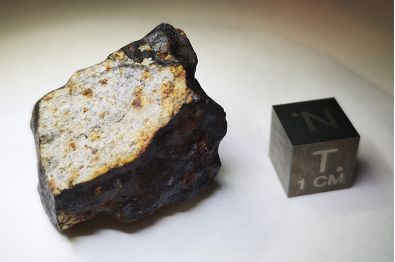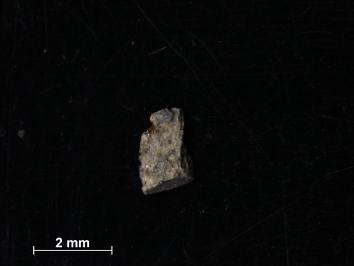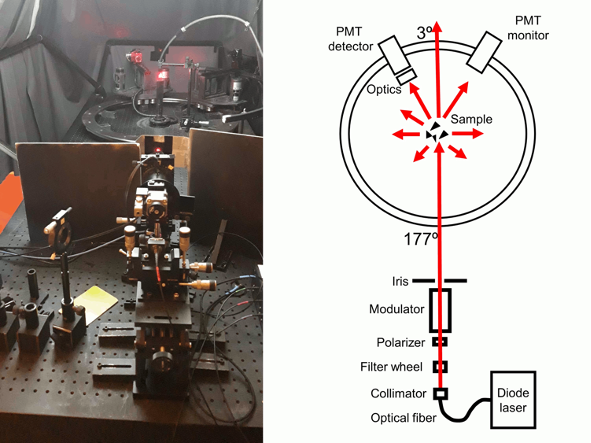- 1Instituto de Astrofísica de Andalucía, IAA-CSIC, Granada, Spain (efrattin@iaa.es)
- 2Università degli Studi di Napoli "Parthenope", Napoli, Italy.
- 3Università di Pisa, Pisa, Italy.
- 4Agenzia Spaziale Italiana, ASI, Matera, Italy.
- 5Agenzia Spaziale Italiana, ASI, Roma, Italy.
Abstract
We present the experimental phase function (PF) and degree of linear polarization (DLP) curves of large grains. We focus on selected pieces of meteorite FRO01093, a L6 chondrite that is a good representative of the dust material in the Didymos – Dimorphos binary system, target of the HERA mission. In the era of space missions and vast amounts of observational data, the need for laboratory studies, developed in a controlled environment is crucial to interpret the data.
Introduction
Hera is a planetary defence ESA mission with the objective to investigate the Didymos binary asteroid, after the NASA's DART mission kinetic impactor test [1]. One of the main scientific goals of the mission consist of the study and characterization of the loose fragments possibly put in orbit, transient or stable, by the impact.
In this framework, the photopolarimetric study of dust grains provides a valuable benchmark to the data obtained by the in-situ measurements.
Measurements
Here we present the PF and DLP curves for a selected set of mm-sized grains representative for the fragments in orbit at the Didymos system. The grains are obtained from the meteorite FRO01093, a L6 chondrite that is a good representative of the dust ejecta in the Didymos – Dimorphos binary system, target of the HERA mission. FRO01093 is a fresh, fusion crusted L6 ordinary chondrite find in Antartica of about 22 g. It has been donated by the Museo Nazionale dell’Antartide, Italy. It exhibits a granoblastic textures, with grains of about 200 µm, and consists mainly of olivine and orthopyroxene. The meteorite has been grinded to produce grains of millimeters belonging to different part of the primary matrix. Figures 1 and 2 show the meteorite and a mm-sized grain obtained from it, respectively.
The measurements have been taken at the IAA Cosmic Dust Laboratory (CODULAB) [2], depicted in Figure 3. CODULAB has provided a large number of experimental scattering matrices of cosmic dust analogues, all collected in the Granada-Amsterdam light scattering database scattering.iaa.es [3]. It can operate with different setups, to measure clouds of micron-sized particles, single mm-sized grains or surfaces [e.g., 4,5,6]. In this work the grain of interest is located at the scattering volume by means of an ultrasonic levitator [7]. The measured PF and DLP curves are performed at 640 nm spanning from 4 to 177 degrees scattering angle range.
In this work, we present the PF and DLP curves for the meteorite fragments. This is part of an ongoing project in which we plan to study the phase function and degree of linear polarization of the meteorites with different geometry in order to simulate the cometary coma and the asteroidal ejecta that HERA mission will be able to detect.

Figure 1. FRO01093 meteorite

Figure 2. A mm-sized grains obtained from the FRO01093 meteorite.

Figure 3. The CODULAB.
Acknowledgements
This work has been supported by the grant PID2021-123370OB-I00 (CATS) funded by MCIN/AEI/10.13039/501100011033, the European Union NextGenerationEU/PTR, and the Italian Space Agency (ASI) within the HERA project (ASI-UniBO agreement A.A. n. 2022-8-HH.0). We thank the Museo Nazionale dell’Antartide, Italy, for the donation of the FRO 01093 meteorite sample, beloning to the Programma Nazionale delle Ricerche in Antartide (PNRA) collection.
References
[1] Michel P. et al., The ESA Hera Mission: Detailed Characterization of the DART Impact Outcome and of the Binary Asteroid (65803) Didymos. PSJ, Vol.3, p.160, 2022.
[2] Muñoz et al., The IAA cosmic dust laboratory: Experimental scattering matrices of clay particles. Icarus, Vol. 211, pp. 894-900, 2011.
[3] Muñoz et al., The Amsterdam-Granada Light Scattering Database, JQSRT, Vol.113, pp. 565-574, 2012.
[4] Gómez-Martín et al., On the application of scattering matrix measurements to detection
and identification of major types of airborne aerosol particles: Volcanic ash, desert dust and pollen JQSRT, Vol.271, 2021.
[5] Muñoz et al., Retrieving Dust Grain Sizes from Photopolarimetry: An Experimental Approach. ApJS, Vol. 256, pp.17, 2021.
[6] Frattin et al., Experimental phase function and degree of linear polarization curve of olivine and spinel and the origin of the Barbarian polarization behaviour. MNRAS, Vol. 517, pp. 5463-5472, 2022.
[7] Colin et al., An acoustic levitator for use in light scattering experiments at the IAA Cosmic Dust Laboratory. in prep
How to cite: Frattin, E., García Izquierdo, F. J., Salari, G., Folco, L., Bertini, I., Martikainen, J., Gómez Martín, J. C., Amoroso, M., Ammannito, E., Moreno, F., and Muñoz, O.: Photopolarimetry of large compact dust grains in preparation for the HERA mission , Europlanet Science Congress 2024, Berlin, Germany, 8–13 Sep 2024, EPSC2024-794, https://doi.org/10.5194/epsc2024-794, 2024.